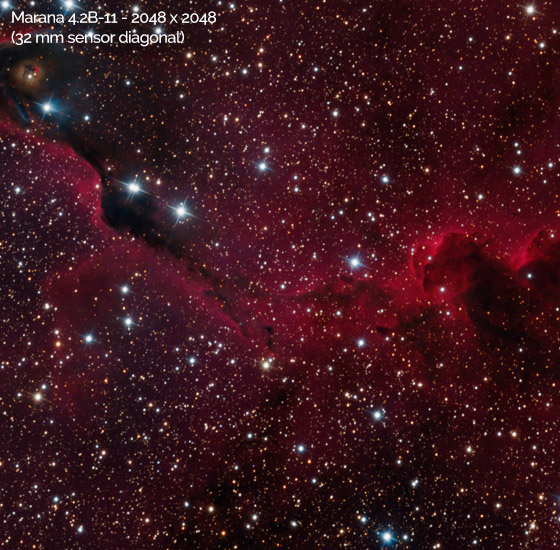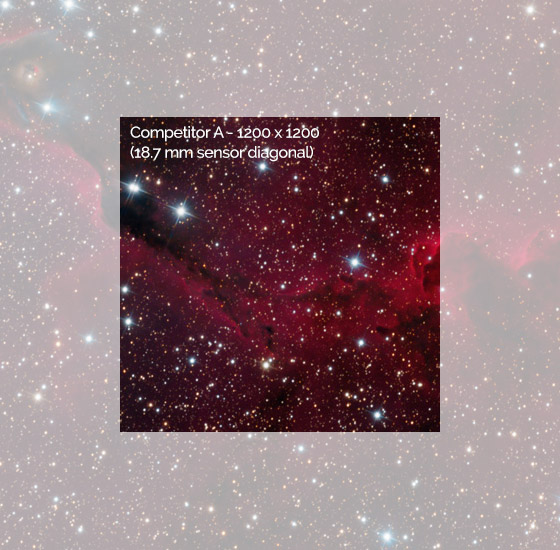The most recent high-performance sCMOS camera platform from Andor, Marana is perfect for different applications in the field of physical sciences such as fast spectroscopy, astronomy, hyperspectral imaging, Bose-Einstein condensation, neutron tomography, and quantum optics.
Both the models in the Marana series are equipped with 95% Quantum Efficiency (QE), 4.2 Megapixel sensors, and industry-leading vacuum cooling up to −45 °C. Thanks to these features, Marana is now the most sensitive back-illuminated sCMOS platform in the market.
Andor has exclusive expertise in offering maximum sCMOS sensitivity, enabling optimization of signal to noise under low light conditions. This becomes optimal for spectroscopic detection of trace concentrations, monitoring smaller orbital objects, and BEC fluorescence detection of discrete numbers of ions/atoms.
Moreover, with higher sensitivity, it is possible to minimize the exposure times, making faster frame rate measurements of dynamic processes easier.
Most importantly, Marana sCMOS has the potential to read out 4.2 Megapixel high-resolution arrays within 50 ms, which is faster than a CCD detector of similar resolution by hundreds of times. The camera also maintains very low read noise at the same time.
The novel “dual-amplifier” method for achieving a wider dynamic range is perfect for accurate visualization and measurement of difficult scenes with both very bright and weak regions. Examples of such scenes include the characterization of spectroscopic materials and solar measurements.
Andor has also applied optimized on-head intelligence to realize superior quantification accuracy. This measure is to ensure industry-leading linearity of >99.7% over the entire dynamic range, optimal for accurate photometry.
Marana 4.2B-11
The Marana 4.2B-11 from Andor is a large-field-of-view model that makes use of a specialized Anti-Glow Technology. This approach allows users to effectively use the whole 2048 x 2048 array, providing a remarkable 32-mm sensor diagonal.
Together with fast frame rates of up to 24 fps (16-bit) and 48 fps (12-bit), this impressive sensor diagonal makes the camera perfect for large sky scanning astronomy applications such as Near-Earth Asteroid detection and orbital debris tracking.
In addition, it is best suited for dense multi-fiber hyperspectral applications. Marana 4.2B-11 is also available with an option of QE profiles—the UV optimized option (“BU”) that widens the usefulness for particular application requirements from 260 to 400 nm.


New Marana 4.2B-6
The new Marana 4.2B-6 model from Andor is a high-speed system that can achieve 74 fps (16-bit). It is the most sensitive back-illuminated camera for spectroscopic or imaging applications that necessitate fast frame rates. Examples of such applications include fast high-resolution spectroscopy, Quantum Gas dynamics, non-destructive imaging and hyperspectral imaging of the dynamics of samples using neutron or X-ray radiography.
The smaller pixel of 6.5 μm is more suitable for resolution matching over various laboratory-based optical imaging frameworks, and even in echelle spectroscopy.
It is feasible to readily adapt the Marana platform to Adaptive Optics wavefront sensing. Apart from its ability to produce hundreds of fps with ROIs, it has also been exclusively designed to reduce data transfer lag.
Moreover, it is possible to leverage the fast frame rate of Marana to largely expand the effective well depth and the dynamic range by fast stacking (accumulation) of images or spectra.